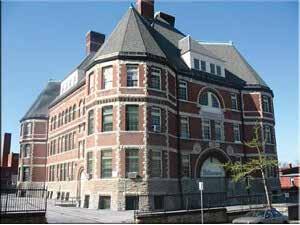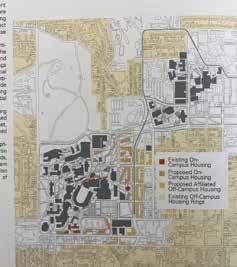
2 minute read
CONTENTS
CUF Was...
CUF: Surpassing Natural Beau-
Advertisement
In 1870, Clifton Heights(CUF) was largely unoccupied, and was described as having “surpassing natural beauty”

It was impractical to live in CUF because of the large hills on the vicinity of the neighborhood
The neighborhood was gaining population since it was becoming within Cincinnati’s city limit
CUF Inclines
The instillation of inclines leading into CUF cultivated growth within the area
These inclines allowed for fast and efficient transportation for the working class people up and down the steep hills
This area above the hills was popular since there was less pollution from industry and sewage than in the basin
Developing Community
Many of the working class families down the hill started to move into the area, bringing about new schools, churches, and shopping areas
These families started to form the identity of CUF, with most people being working-class German-Americans
Present
Each year since 2010 UC has continued to admit record breaking numbers of students. Their aspirations continue to grow, despite concerns of physical and cultural strain being placed onto the rest of CUF
UC revisits their plan giving it updates. Discussing housing, their disregard towards the surrounding neighborhood is seen, as they consider a larger portion of its housing to be available for students’ use

2001 2000
The university begins partnerships to create community development corporations (CDCs). Clifton Heights Community Urban Redevelopment Corporation formed as lead implementation of Clifton Heights/ UC Joint Urban Renewal Plan
Late 20th Century
The university has defined its boundaries, imposing its skyline and footprint over CUF. Cultivating a master plan in 1989 cements University of Cincinnati’s vision
1915
Early 20th Century
University of Cincinnati finds prosperity. Needing more room to house a renowned research institution, UC begins expanding into the surrounding Burnet Woods park and Corryville neighborhood Good Samaritan Hospital also moves from downtown to CUF
UC’s Hilltop Home
In 1995 The University of Cincinnati from their main location just north of modern day OTR to its present location along Clifton Avenue

The Inclines nearby allowed for this change to be feasible, since students had easier access to the university
At this time UC was an addition to the community’s space not with the identity
UC Expansion
As time passed, UC continued to expand out wards into Burnet Woods and Corryville , causing a dynamic shift within the neighborhood
This expansion begins a shift from UC being a small part of the neighborhood to becoming a large part of its identity
This constant expansion is indicative of UC’s future attitude towards neighborhood environments
UC Commands
In modern days, UC administration perceive all surrounding housing as housing for students, instead of an area where residents and students coexist
Students generally care less about the urban environment than permanent residents since they live here temporarily, leading to some decay in the area near the university
The central identity of the neighborhood has faded due to the large presence of students
Hughes High School moves up the hill to the corner of Clifton and Calhoun, following the university
1895
University of Cincinnati moves its campus up to CUF. The introduction of such a major institution creates a new dynamic within the neighborhood, bringing a large number of faculty and students to the existing working class identity
The Fairview Incline added to the movement started by the Bellevue Incline
1892-
1923
1876-1926
The Bellevue Incline accelerated the migration into the early areas of CUF. People settled in CUF to escape the poor living conditions and industrial pollution of Downtown and Over-the-Rhine
1890’s
Twenty years later CUF is firmly established as a dense, residential neighborhood
1871
A newspaper article detailing the sale of lots of Burnet Woods at auction
“Clifton Heights is a term applied to the beautifully-rolling lands ... it requires no prophet to foresee a great future ... the place is now within the city limits, and each year is becoming more thickly populated.”
1870






